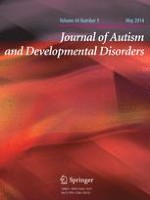01-05-2014 | Original Paper
Postsecondary Pathways and Persistence for STEM Versus Non-STEM Majors: Among College Students with an Autism Spectrum Disorder
Gepubliceerd in: Journal of Autism and Developmental Disorders | Uitgave 5/2014
Log in om toegang te krijgenAbstract
Little is known about postsecondary pathways and persistence among college students with an autism spectrum disorder (ASD). This study analyzed data from the National Longitudinal Transition Study-2, 2001–2009, a nationally representative sample of students in special education with an ASD who progressed from high school to postsecondary education. Findings suggest that most college students with an ASD enrolled in a 2-year community college at some point in the postsecondary careers (81 %). Those in science, technology, engineering and mathematics (STEM) fields were more likely to persist in a 2-year community college and were twice as likely to transfer from a 2-year community college to a 4-year university than their peers in the non-STEM fields. College persistence rates varied by gender, race, parent education level, and college pathway and major. Educational policy implications are discussed.
